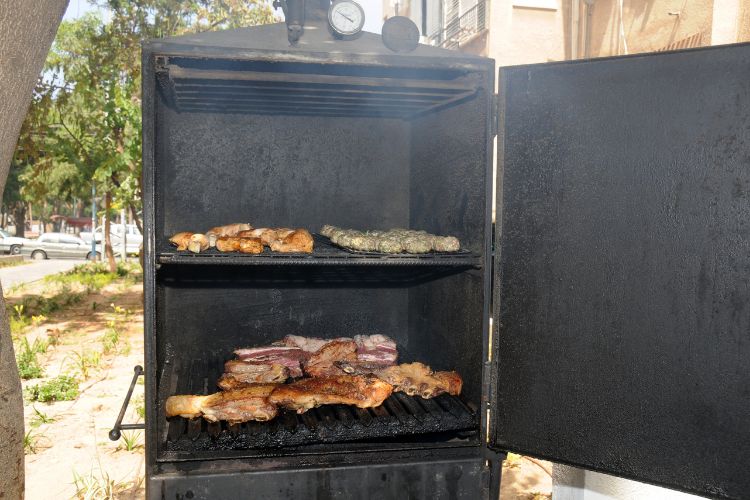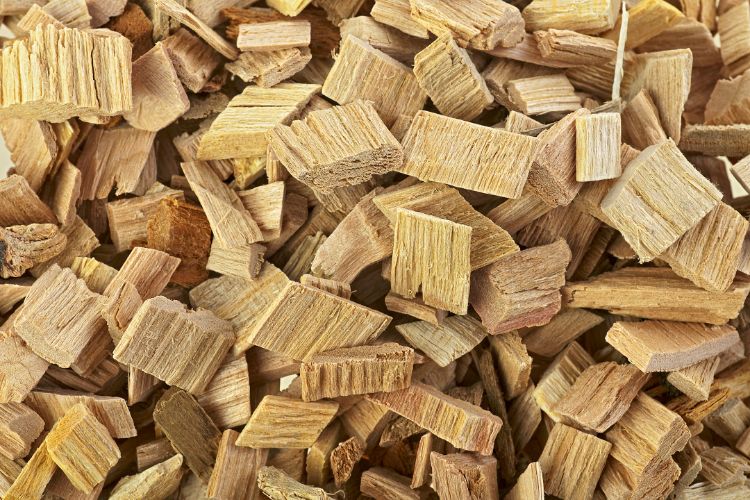We strive to provide you with authoritative, trustworthy, and expert advice. In doing so, the staff at bbqdropout.com performs extensive research, editing, and fact checking to every post on this webiste. If you feel that this article can improve, please feel free to reach us at staff@bbqdropout.com
Before continuing this article, I wanted to let you know that I have a YouTube channel where I showcase all sorts of video content related to BBQ. Subscribing would mean a lot to me, and I very much appreicate all the support!
Many are confused and wonder: Why is my Masterbuilt electric smoker not smoking?
Well, this problem isn’t limited to only Masterbuilt smokers; it’s a common issue among a myriad of electric smokers. The good news is that multiple quick fixes can solve this issue.
In this post, I’ll walk you through all the possible causes of the lack of your smoker’s smoke. More importantly, I’ll provide you with the most effective solution for each.
The Most Common Causes for Electric Smokers’s Lack of Smoke
Countless reasons might stand behind the smoke problem. However, from my experience, a few causes are the most common culprits for this issue.
Let’s take a look at them and how to fix each:
1. Inadequate Heat
As you probably know, each smoker has a heating element responsible for achieving the required cooking temperature inside the smoker. This heating element also smolders the wood chips to produce smoke.
The heating element goes on and off automatically to maintain the predetermined temperature level of the smoker. It goes on for a few minutes and then goes off again, and this cycle is repeated until cooking time is out.
The problem happens when you’re smoking on a scorching day. In such sweltering weather, the heating element can stay off for extended periods.
This is because the hot weather outside the smoker can fool the device sensor into registering a higher inner temperature.
As a result, the heating element won’t produce enough heat to smolder the wood chips. So, it’ll produce inadequate or no smoke.
Luckily, overcoming this problem is simple. You need to trick the heating element into going on for sufficient time to heat the wood chips to smoke. There are two options to achieve this:
Turn On the Smoker Only After Placing the Food Inside
You need to prevent the temperature from rising high too quickly, causing the heating element to turn off before heating the wood chips adequately.
Here’s how: don’t turn on the smoker until you place the food inside it, fill the water pan, and load the required wood chips into the tray.
By doing so, you’ll allow the electric heating element more time to smolder the wood to start producing smoke.
Open the Smoker Door for a Few Minutes

Another way to overcome the inadequate heat issue is to use the standard smoking process but with a slight adjustment.
Begin by preheating the smoker as usual and filling the hot water tray. Then, put the food into the smoker and fill the wood chip box.
At this point, don’t close the smoker’s door like usual. Instead, keep the door open for a few minutes to allow a lot of heat to escape.
When you do this, the heating element will have to go on for an extended period to increase the temperature. Consequently, it’ll smolder the wood chips and produce the required smoke.
2. Wood Chips Are Completely Burnt Up
Every one to two hours, the wood chips you place in the smoker completely burn up and stop producing smoke.
So, you need to add a new supply of chips to maintain a steady smoke production.
The Solution
I recommend you add a handful of wood chips, preferably around five pieces, every hour to maintain optimal smoke production.
Check the smoker ten minutes after adding the new chips. If it still doesn’t produce enough smoke, you might need to add a bit more.
That said, avoid overloading the wood chip tray, as it can produce excessive white smoke. This white smoke can ruin your food’s desirable smoky flavor.
3. Erroneous Temperature Settings
You should always set your smoker precisely to the recommended temperature to ensure it produces the optimal level of smoke. If this isn’t the case, it’ll generate little to no smoke.
This is because an incorrect temperature range will produce less heat than required to generate enough smoke consistently.
The Solution
Pay close attention to the smoker’s temperature to overcome this issue. Read the manufacturer’s instructions regarding temperatures carefully and make sure to apply them accurately.
You also have to consider the ideal temperature for the type of food you’re smoking and adjust the temp accordingly.
In addition, you can benefit from this “smoking at 225 vs 250” guide in determining the perfect temperature.
That said, if your smoker’s temperature keeps decreasing for no obvious reason, check out the solution in this “smoker temp keeps dropping” guide.
4. Improper Wood Chips

It’s not a surprise that using improper wood chips can lead to problems in your electric smoker.
Using too small wood chunks or chips made of softwood or containing excessive bark can be highly problematic.
These types of wood chips significantly decrease the smoker’s ability to produce smoke.
The Solution
The solution to this issue is quite obvious: you should pick quality wood chips.
I recommend wood chips made of hardwood such as apple, oak, hickory, cherry, or pecan. These are the types that I found to produce the optimal level of smoke.
That said, you need to be cautious and avoid choosing wood chips treated with chemicals. Such types are highly likely to add an unpleasant smoke flavor to your foods.
5. Using Wet Wood Chips
“Soak your wood chips in water or other beverages before putting them into a smoker.”
If you follow this widespread advice, it’s time to consider stopping. Damp wood chips can be the reason why your smoker doesn’t smoke.
Contrary to the claims, soaking wood chips doesn’t increase the smoke. Instead, it produces a lot of steam before starting to emit smoke.
This is simply because, unlike dry chips, wet ones take considerable time to dry out before they get hot enough to start generating sufficient smoke.
The Solution
The next time you prepare your smoker for a barbecue, use dry wood chips instead of wet ones.
Wrapping Up
By now, you know why your Masterbuilt electric smoker isn’t smoking.
Multiple culprits can contribute to the lack of smoke in your electric smoker. Inadequate heat, erroneous temperature settings, and the complete burn-up of wood chips are the main causes.
Using improper or wet wood chips can also stand behind this issue. Fortunately, all of these causes can be quickly fixed using the instructions mentioned above.
Whenever you need help with your electric smoker’s smoking issue, refer to this article for guidance.
Robert is a certified Pitmaster, with over a decade of experience in smoking the best meats you’ll ever feast upon. He also has a Bachelor of Business Administration from the University of Texas at San Antonio. When he’s not researching technical topics, he’s most likely barbecuing in his backyard.
